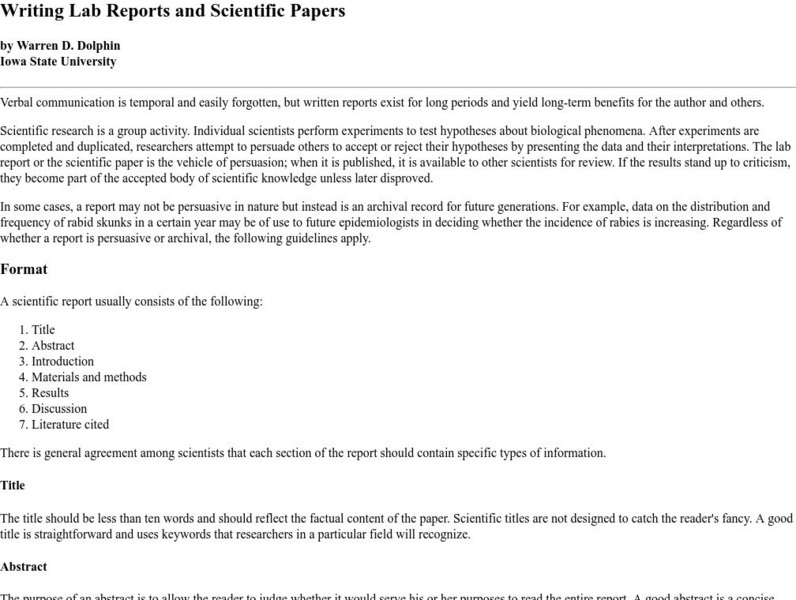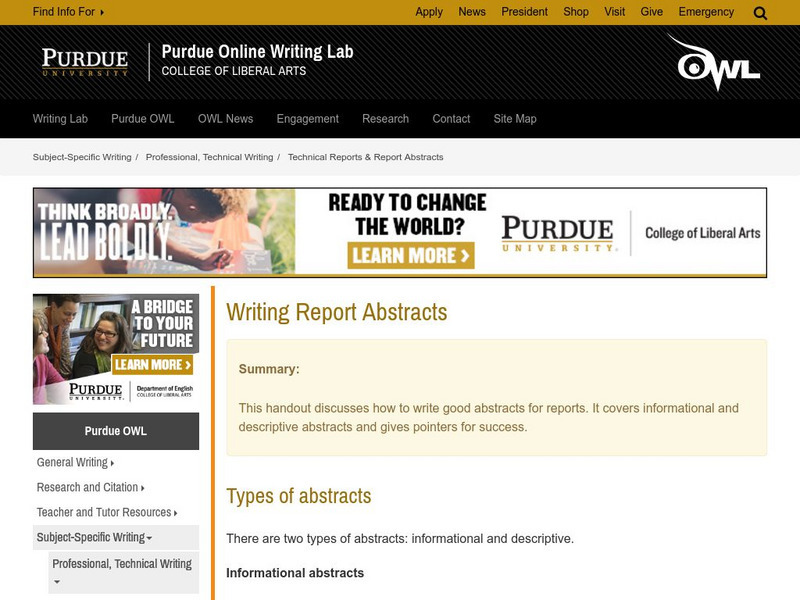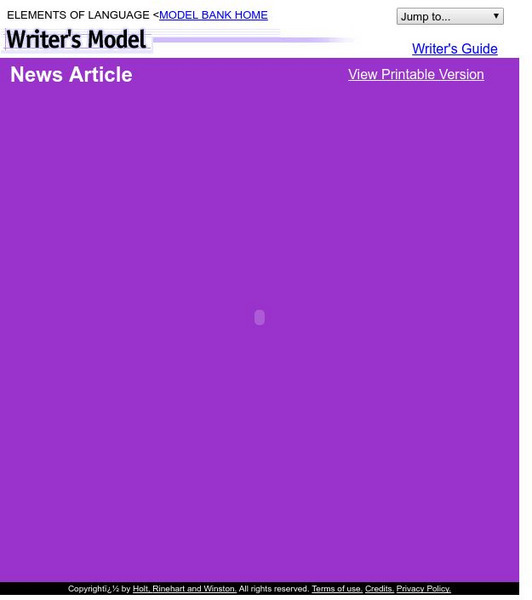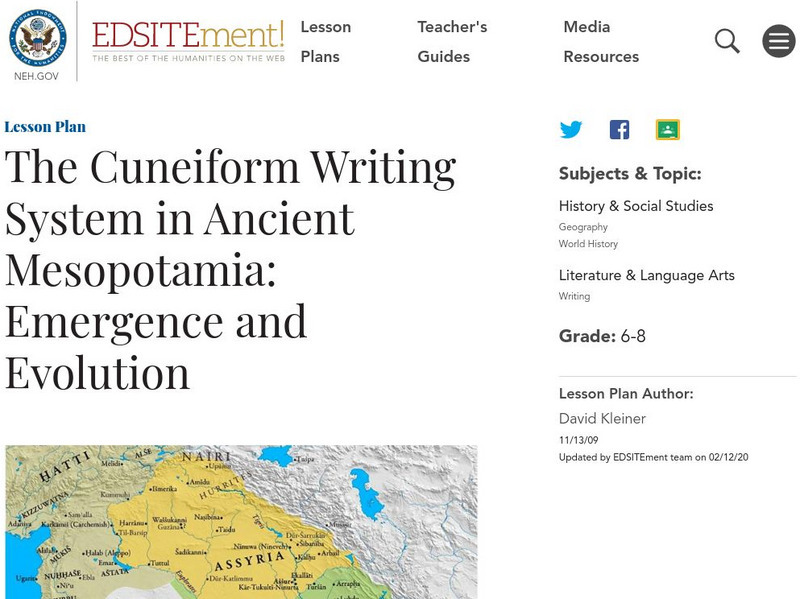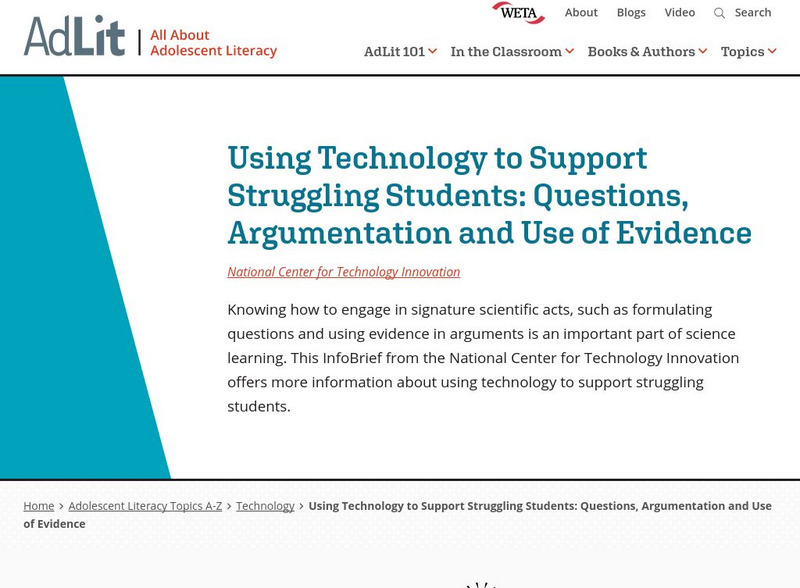Japanese Ministry of Foreign Affairs
Web Japan: Language
Examine the some of the thousands of characters that make up the Japanese written language. A simple explanation of the different kinds of characters and their uses helps you figure out how the Japanese language works.
Huntington Library
Huntington Library: The Development of Writing and Books: Part Ii [Pdf]
In this lesson, learners examine early civilizations and the evolution of written language, at different early methods used to record information in writing, how these methods evolved, and at the impact of books on societies.
McGraw Hill
Writing Lab Reports and Scientific Papers
This site list and describes the seven pieces necessary for a lab report.
Better Lesson
Better Lesson: Cities in Mesopotamia: Understanding a Complex Text
In this lesson, 6th graders use details from a nonfiction article to create a visual representation and then, from that visual, provide evidence that demonstrates their understanding of the text. Includes samples of student work and lots...
US Navy
Navigation
[Archived Content] Interactive site where students can learn about navigation techniques through various learning activities.
PBS
Pbs Learning Media: The Zombie Autopsies: Publish or Perish, for Real
An excellent lesson where students are guided in how to write an article for publication in a scientific journal. Includes downloadable lesson and student handout.
Other
Coping Skills for Kids: Brain Works Project
How the brain works and how it ties to coping skills in the pre-teen are the focus of this website. Informative links for both students and adults.
Online Writing Lab at Purdue University
Purdue University Owl: Writing Report Abstracts
From Purdue University, a lesson that lays out the details to writing a good abstract.
Edutopia
Edutopia: How to Put Self Directed Learning to Work in Your Classroom
Self-directed learning is a natural pathway to deep understanding and efficacy. This article discusses the benefits of self-directed learning, the components necessary for this type of learning, and how to implement it in your school.
Houghton Mifflin Harcourt
Holt, Rinehart and Winston: Writer's Model: News Article Example
This two-page news article includes a left-hand column with pointers on placement of critical features. Clicking on the "Writer's Guide" link in the upper right-hand corner of the page enables the user to get tips, directions, and...
National Endowment for the Humanities
Neh: Edsit Ement: The Cuneiform Writing System in Ancient Mesopotamia
In this lesson plan, middle schoolers will consider "The Cuneiform Writing System in Ancient Mesopotamia: Emergence and Evolution." The plan includes worksheets and other student materials that can be found under the resource tab.
PBS
Pbs Learning Media: Out of Proportion
Students are asked to explain how natural disasters affect environmental health.
AdLit
Ad lit.org: Using Technology to Support Struggling Students
Knowing how to engage in signature scientific acts, such as formulating questions and using evidence in arguments is an important part of science learning. This InfoBrief from the National Center for Technology Innovation offers more...
University of California
Prw Newsletter: How to Write Short, Succinct Press Releases
Found in the PRW Newsletter, this article is an interview with the former Public Relations Administrator for University of Miami/Jackson Memorial Hospital, Ruth Kassewitz.
Writing Fix
Writing Fix: The Wacky "Box of Rocks" Assignment
Inspired by Barry Lane's book 51 Wacky We-Search Reports, in this cross-curricular lesson, learners learn how to summarize properly.
Writing Fix
Writing Fix: Who Doesn't Want to Be a Millionaire
Inspired by Barry Lane's book 51 Wacky We-Search Reports, in this cross-curricular lesson learners learn how to summarize properly.
Writing Fix
Writing Fix: The Wacky Classroom Calendar
Inspired by Barry Lane's book 51 Wacky We-Search Reports, in this cross-curricular lesson students learn how to summarize properly.
Writing Fix
Writing Fix: The Wacky Advertisement (With Disclaimer) Activity
Inspired by Barry Lane's book 51 Wacky We-Search Reports, in this cross-curricular lesson students learn how to summarize properly.
Polk Brothers Foundation Center for Urban Education at DePaul University
De Paul University: Center for Urban Education: Making a Difference [Pdf]
"Making a Difference" is a one page, fictional, reading passage about students helping to get their families and others to register to vote. It is followed by constructed-response questions which require students to provide evidence from...
E Reading Worksheets
E Reading Worksheets: Patterns of Organization: Chronological Order
This learning module provides an explanation of the chronological order text structure. An explanation of the chronological text structure is provided, and a video tutorial lesson is provided to supplement this lesson [1:04] Additional...
E Reading Worksheets
E Reading Worksheets: Patterns of Organization: Compare and Contrast
This learning module provides an explanation of the compare and contrast text structure. An explanation of the compare and contrast text structure is provided, and the compare and contrast text structure is demonstrated in a video...
E Reading Worksheets
E Reading Worksheets: Patterns of Organization: Cause and Effect
This learning module provides an explanation of the cause and effect text structure. An explanation of the cause and effect text structure is provided, and a video tutorial lesson [0:53] provides additional examples to supplement the...
E Reading Worksheets
E Reading Worksheets: Patterns of Organization: Sequence
This learning module provides an explanation of the text structure for sequence. An explanation of the text structure for a sequence is provided, and chronological order text structure is demonstrated in a video tutorial lesson [1:24]
Digital Dialects
Digital Dialects: Learn Turkish
For beginners or intermediate level Turkish speakers, practice the language's basic vocabulary and phrases. Play games to challenge recognition and understanding.



![Huntington Library: The Development of Writing and Books: Part Ii [Pdf] Lesson Plan Huntington Library: The Development of Writing and Books: Part Ii [Pdf] Lesson Plan](https://d15y2dacu3jp90.cloudfront.net/images/attachment_defaults/resource/large/FPO-knovation.png)
